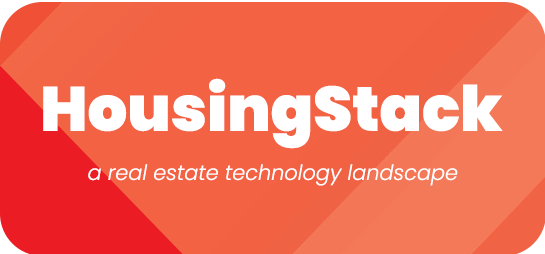HousingStack is a real estate technology landscape that provides a dynamic visual that reflects the rapid changes in the sector. The HousingStack is exclusively for HW+ members. To join the HW+ community, go here.
Perhaps the least sexy technology to talk about are the back-office systems. But these are the lifeblood of the brokerage and certainly can’t be ignored or underwhelming.
However, this seems to be an area where little investment has flowed in recent years and certainly hasn’t seen the investment that areas like lead generation and agent tools have seen. And while there’s more to it than this, I’ve broken down the segment into commissions and office management and accounting. Honestly, there’s such a blurred line between commission tracking and accounting that many companies in the space have built systems to try to deal with it all.

HW+ Analyst
In terms of the general purpose of real estate back-office systems, I look at them as the systems that the company needs to manage its day-to-day operations. Core to that is tracking revenue coming in and expenses going out. In addition, these systems are helping you manage how you’re getting paid and making payouts. And they’re making sure that the amounts are correct and payments and receipts are on time.
This isn’t just about numbers though. It’s also about all of the details behind those numbers. Commission plans. W-9’s. License numbers. Bank accounts. Addresses. EINs and SSNs. Credit cards. In other words, all kinds of sensitive information that needs to be carefully tracked, stored and secured. And believe me, I’ve seen all kinds of no no’s on this front.
Yes, these systems are lifeblood. They’re also fraught with peril from a data privacy, security and liability perspective. So you can’t just give it the ol’ college try. You need to be confident.
Commissions, disbursements, accounting and more
Like many of the systems I’ve discussed throughout the HousingStack articles, integration is quite crucial here, and honestly even moreso. That’s especially true when it comes to the back-office systems that help facilitate the right income calculations and getting your agents paid. Typically these systems will at least integrate with your transaction management system (TMS) and with your accounting system. Ideally these systems integrate seamlessly with your brokerage CRM and recruiting systems as well for seamless transition into productivity.
There are a number of systems out there that actually handle more than commissions and back-office functions. For example, products like Brokermint cross the boundary into transaction management and compliance while also handling agent onboarding, commission plans and financial tracking, then integrating with accounting systems like QuickBooks and others.
Core Back Office (formerly BrokerSumo and acquired by Inside Real Estate in 2015) sits right in the middle of TMSs like SkySlope and DocuSign Rooms, and accounting systems like QuickBooks and Microsoft Dynamics, handling agent onboarding, commission plans, commission tracking and integrations with payment processing and 1099 filings. Lone Wolf Back Office (formerly brokerWOLF) is perhaps the most mature offering out there, with roots dating back to 1989, and tries to handle all aspects of running and managing the brokerage, including a full-fledged accounting system with GL, AR, AP, payroll, trust accounting and more.
broker.ez, was designed for brokerages who are part of a franchise system and has taken a workflow-centered approach to helping brokerages manage back-office operations while integrating with accounting and other systems.
Some of the newest entrants on the scene include RealtyBackOffice, started in 2015 in Miami, which tries to cover all the bases from forms and eSignature to transaction management to commission tracking and forecasting and disbursement authorization. They also integrate with a number of accounting and other systems for convenient data synchronization. Zipi, started in 2017 in Roseville, California, provides integrated back-office, accounting and payment services in a single platform. Integrated with SkySlope, Dotloop and DocuSign, their system takes over with commission calculations and disbursement authorizations, then handles accounting functions and reporting. Brokerage Engine, the newest entrant in this space starting in 2018, was founded by Sotheby’s franchise owners and ex Rackspace founders. In addition to back-office and accounting functions, Brokerage Engine focuses on workflow and integrations with many other systems including the Realogy dash back-end.
While companies like Lone Wolf are well-known for their accounting system, they’ve clearly extended far beyond that through numerous acquisitions as well as internal development efforts. AcctFusion, on the other hand, has focused almost exclusively on accounting since their founding in 2017 with the addition of commission management and calculation.
Emphasys Software, part of the Constellation Real Estate Group, also offers an accounting-focused solution both as a stand-alone offering as well as an integrated solution leveraging Quickbooks. REALedger is considered an “all-in-one” system for commissions, accounting, bookkeeping and more.
Wrapping Up
There are more than a dozen other companies building back-office systems for real estate brokerages indicated on the HousingStack, so depending on your needs, there’s bound to be a solution for you. There’s no reason to run your business on spreadsheets!
There’s definitely complexity when it comes to real estate back-office functions, especially as it relates to commission plans, how agents get paid and how the money should properly flow. If you’re in the market for a new system, be sure you understand your requirements. How many commission plans do you really have? Can the system handle individual and team caps? Can you treat agents both as customers (for things like monthly fees) and 1099 Contractors (for their commission payments)? Can you track unpaid fees and apply them against transactions before agent payouts? Is all of the data secure, auditable and safely back-up?
It’s no small task migrating from the way you do things today, to a new way. But that’s no reason not to look at what’s out there. One of the biggest impediments to a brokerage’s success is usually an inability to scale to support greater volume. People alone don’t solve that problem, nor do systems alone. It’s the blend of the two that make all the difference, So if you find that your people are tapped, that it’s taking longer to get people paid or close out each month or quarter. It’s probably time to evaluate and see what systems are out there to help your people succeed.





